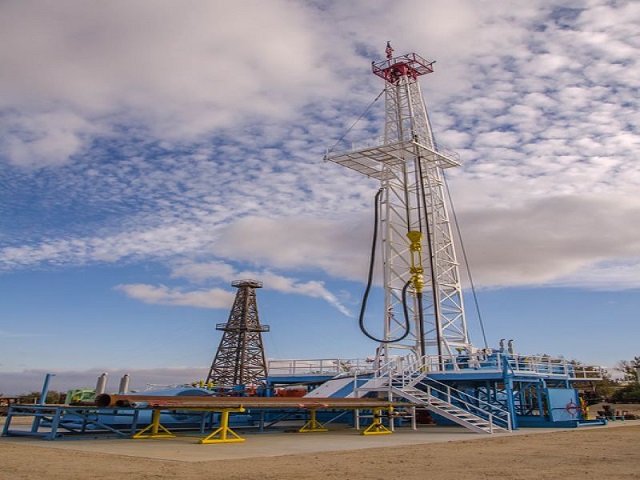
Buliisa, Uganda | THE INDEPENDENT | TotalEnergies has notified the government about its plan to produce Liquefied Petroleum Gas at the Tilenga Development Area.
LPG is a highly versatile energy source and can be used in a wide range of applications such as water and space heating, cooking as well as an alternative transport fuel.
The oil and gas explorer wrote to the Minister of Energy at the end of last month asking for a license to construct the Tilenga Liquefied Petroleum Gas Facility. According to the documents, TotalEnergies Uganda E&P (TEPU) which is part of the French super-major TotalEnergies plans to produce 80,000 tons of Liquefied Petroleum Gas per year.
TotalEnergies Uganda E&P has been under watch by environmental activists who had expressed fear that it planned to flare the gas when production begins at its fields based in Buliisa and Nwoya districts.
Even before the Final Investment Decision (FID), TotalEnergies had promised that there would be zero routine gas flaring in Uganda. Flaring and venting occur when oil field operators opt to burn the “associated” gas that accompanies oil production, or simply release it to the atmosphere, rather than to build the equipment and pipelines to capture it.
Gas flaring contributes to climate change by releasing millions of tons of carbon dioxide and methane into the atmosphere. The government of Uganda had equally made it clear that no flaring would be allowed at the Kingfisher Development area operated by CNOOC Uganda and at the Tilenga Development area operated by TotalEnergies Uganda E&P.
Gas conversion is one of the operations in the Petroleum (Refining, Conversion, Transmission and Midstream Storage) Act, 2013.
The government required the Upstream licensees; Total Energies E&P Uganda & CNOOC Uganda, to carry out studies to determine the optimal utilization of any excess associated gas realised after meeting the internal requirements. The studies recommended LPG recovery from excess associated gas. The recovered LPG will be used to meet local and regional demand.
The Minister of Energy is required by law to issue a license for the construction and operation of gas conversion facilities in the fields. The process of the award of the license includes the public inspection of the documents submitted by the planned operator of the conversion facilities.
The Minister, Ruth Nankabirwa the beginning of this month as required by the law published a legal notice calling for the public or directly affected parties, and local governments in areas where the Tilenga Petroleum Gas facility is to be located to inspect documents submitted by TotalEnergies.
The law provides that the affected parties can object to the granting of the license to construct the facility. The hearing in the TotalEnergies application is open up to the end of February.
Nankabirwa’s legal notice came just a week after she had granted construction and operation licenses to CNOOC Uganda Limited to put up a Liquefied Petroleum Gas (LPG) facility as part of the Central Processing Facility at the Kingfisher oil fields in Kikuube district.
CNOOC Uganda Limited in a message said the award of the license marked what it described as a major milestone in the journey to producing energy for Uganda and is in line with our vision of ‘Energy for a better future” Nankbiwar on the other hand revealed that the grant of the license was based on a common understanding of the strategy for the utilization of excess gas from the oil fields.
“As you are aware, in addition to the oil resources, Uganda has gas that is estimated at 500 billion cubic feet. This raw gas is expected to be produced along with the crude oil. Under the laws of Uganda and best industry practice, there will be no flaring or venting of the gas,” said Nankabirwa.
According to Nankbirwa, putting to use some of the oil industry by-products such as LPG shall be critical in rescuing the country’s forest cover by getting millions of Ugandans off wood charcoal for cooking, thereby contributing to a more sustainable environment
“Africa’s forest cover acts as a carbon sink. To capture emissions from wherever they are coming from. So we need to be given time while we are doing reforestation,” Nankabirwa said and she defended why Uganda and Africa should continue using LPG in cooking.
Steven Enach, the Manager of Refining, Gas Processing and Utilisation at the Petroleum Authority of Uganda (PAU) has in the past indicated that Uganda will produce 100,000kg of liquified petroleum gas (LPG) annually at the peak of commercial oil production from the Albertine Graben.
Enach indicated that the discovery of commercially viable oil and gas deposits in Uganda presents a great opportunity to further improve the state of the energy sector in the region, and Uganda in particular.
“As per the ongoing engineering design studies, the Refinery Project in Hoima is projected to produce LPG in its product slate. In total, the three projects (Tilenga Project area, Kingfisher Development area and the Refinery) are projected to produce about 330, 000 tons/year of LPG at peak,” said Enach.
According to the International Energy Agency (IEA) LPG remains the primary solution to deliver clean cooking access, representing nearly half of the households gaining access by 2030. Today, 2.3 billion people worldwide – nearly one third of the global population – still cook their meals over open fires or on basic stoves, breathing in harmful smoke released from burning coal, charcoal, firewood, agricultural wastes, and animal dung. These practices can still be found in 128 countries today – where households do not have the tools or means to reliably cook meals using clean burning fuels. Even the simplest, widely available cooking devices could improve this situation, including devices like camp stoves using liquefied petroleum gases (LPG) and electric hotplates.
******
URN
 The Independent Uganda: You get the Truth we Pay the Price
The Independent Uganda: You get the Truth we Pay the Price



